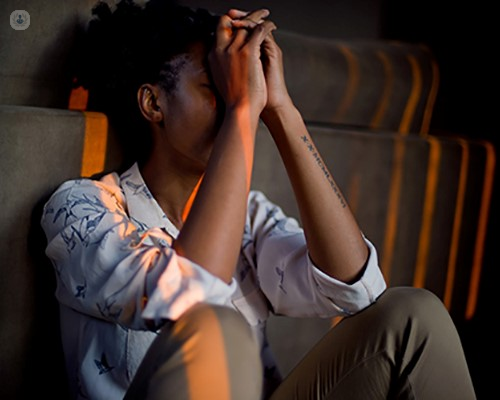Insights on non-hodgkin lymphoma
Escrito por:In his latest online article, Dr Graham Collins gives us his insights into non-Hodgkin-lymphoma. He talks about early signs and symptoms, diagnosis, treatment options, side effects, prevention, risk factors and supporting a loved one.

What are the early signs and symptoms of non-Hodgkin lymphoma?
The commonest symptom of non-Hodgkin lymphoma is a lump. This can be anywhere in the body, but the common places are a lump in the neck, armpit or groin. Sometimes lumps develop inside the body where they cannot be felt. This can cause many different symptoms. A lump in the chest can cause a cough or breathlessness, a lump in the tummy can cause bloating or problems with the liver or kidneys.
Other more general symptoms include fatigue (or tiredness), drenching night sweats and loss of weight.
What are the different types of non-Hodgkin lymphoma, and how are they diagnosed?
Non-Hodgkin lymphoma (or NHL for short) is a complicated disorder but in broad terms we break it down into T-cell or B-cell non-Hodgkin lymphoma. B-cell is far more common and within B-cell NHL there are high grade (or aggressive) forms or low grade (also known as indolent) forms. There are different types of high-grade forms, the most common is called diffuse large B-cell lymphoma. There are different types of low-grade forms also, the most common being follicular lymphoma.
High grade forms tend to grow quite quickly and can make people unwell. However, they are treatable and, in many cases, curable with combinations of chemotherapy and antibody drugs. Low grade forms are much slower and often people are very well at diagnosis. Whilst there are good treatments, low grade lymphoma is not generally curable so often we simply keep an eye on it (called ‘active surveillance’ or ‘watch and wait’ initially). If and when treatment is needed, chemotherapy, antibody drugs or more targeted agents can be used. Sometimes low-grade lymphoma can turn into high grade (called high grade transformation). In this situation, treatment of the high-grade lymphoma takes priority.
Diagnosis of all lymphoma is by a biopsy usually of a lump. Sometimes a bone marrow biopsy is needed. A scan (such as a PET or CT scan) is required to then show exactly where the lymphoma is – this is called staging. Once diagnosis and staging are performed, the appropriate management plan can be formulated.
What are the treatment options for non-Hodgkin lymphoma, and what are their side effects?
The main treatment for the different type of Hodgkin lymphoma is with an antibody drug called rituximab (or Obinutuzumab) combined with chemotherapy. The exact combination of chemotherapy differs depending on the type but for the commonest type of lymphoma, CHOP or Pola-CHP chemo is often used. Side effects include fatigue, nausea, risk of infection, infusion reactions, constipation, taste change, hair loss (although this doesn’t happen with all chemotherapy) and mild nerve damage (causing pins and needles or numbness in the fingers and toes). Other specific side effects may be associated with specific chemotherapy regimens.
For relapsed lymphoma, sometimes more intensive treatments are used such as a stem cell transplant or CAR T-cell therapy (a type of immunotherapy). However, in the more low-grade forms, rituximab with chemotherapy can often be used again and sometimes targeted agents can be effective depending on the subtype.
Radiotherapy may also be used in some circumstances.
Can non-Hodgkin lymphoma be prevented, and what are the risk factors associated with it?
A lot of research has been done looking into the causes of non-Hodgkin lymphoma and for the vast majority of cases, no cause is found. There are some risk factors which may apply to some patients. For example, previous infection with the viruses EBV, HIV or HTLV-1 increases the risk of some subtypes. Patients on drugs which suppress the immune system can also increase risk.
There are no known ways to prevent non-Hodgkin lymphoma developing and there is no screening programme for it.
How can I support a loved one who has been diagnosed with non-Hodgkin lymphoma?
It can be very stressful being diagnosed with any form of cancer, so having a friend or loved one to attend consultations with them and to talk with can be extremely helpful. When patients are on treatment they may need lifts to the hospital, or help if they are feeling very tired. It is important to reduce the risk of someone on treatment contracting an infection though, so if a friend or loved one has an obvious infection it is best to keep their distance until they are better.
Dr Graham Collins is a distinguished haematologist with over 20 years of experience. You can schedule an appointment with Dr Collins on his Top Doctors profile.


